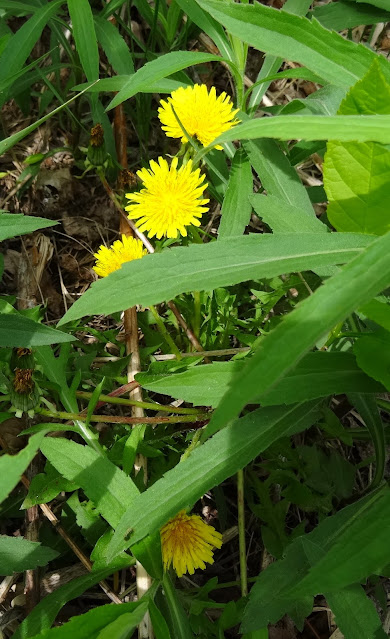This plant Eutrochium maculatum, is also called Spotted Joe-pye Weed, Purple Boneset, Spotted Trumpetweed. It is related to the similar Boneset which blooms white instead of purple or pink.
9/25/2023
8/29/2023
5/17/2023
8/19/2022
7/15/2022
monardas - bee balm - bergamot
5/12/2022
nectar and pollen
9/20/2021
purple asters
8/19/2021
strong stem
Ironweed is one of a few host plants for American Painted Lady butterfly. ‘Host plants’ are those that the butterfly lives on, lays eggs on, and their larvae are sustained by.
See also the post on 8-21-2020
8/16/2021
blue lobelia
Blue Lobelia, a native perennial, started blooming several weeks ago in the wetland around the pond. Each spike of flowers opens from the bottom up. This plant Lobelia siphilitica is related to the intense red Cardinal Flower Lobelia siphilitica. In fact, sometimes Blue Lobelia is called Blue Cardinal Flower. It should bloom until frost, now that we received some rain after a dry summer.
7/19/2021
7/17/2021
royal catchfly
Royal Catchfly Silene regia makes its bright red flowers stand out among the white and purple wildflowers now blooming.
This family of plants was named 'catchfly' because it has a sticky seed pod behind the flower. Little flies, gnats, and other tiny insects get stuck on the sticky pod or stem.
Butterflies also pollinate this wildflower.
9/26/2020
September wildflowers
9/25/2020
asters
9/02/2020
8/30/2020
planthopper
Planthoppers are masters of disguise. A green Acanalonid Planthopper, hiding on a stem, can look like part of the plant -- a seed pod, leaf, bract, or stipule.
This one is only 3/8 inch long. It was perched on a stem at the leaf sheath, probably sucking sap from the grass. Planthoppers, true to their name, can leap many times the length of their bodies. And they are very agile insects that can move easily forwards, backwards, or sideways.
8/25/2020
goldenrod
To complement all the blue and purple flowers around the pond this week, the Goldenrod has unfurled its blooms. Solidago species, commonly called Goldenrods, are in a genus of more than 100 species of flowering plants in the aster family, Asteraceae.
Goldenrods are often blamed for allergies, but they have sticky pollen and rely on insects to move most of it. The wind borne pollen of ragweeds and pigweeds are to blame for 'hay fever' in late summer.
These plants are habitat for a large number of insect species. Blooming in late summer, they are a critical nectar source for many bees, butterflies, and moths to fortify themselves before freezing weather comes.




















